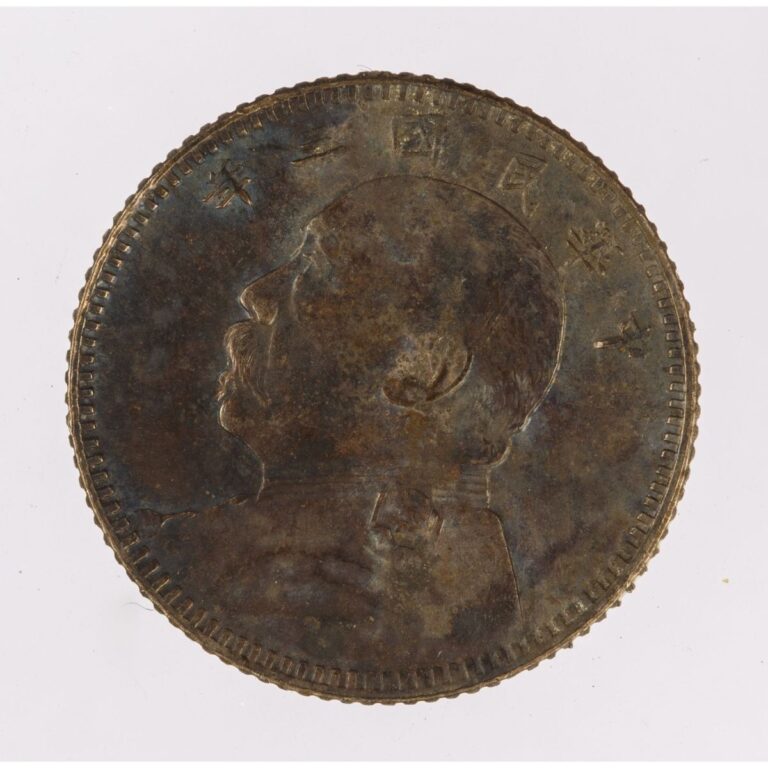Coin from the Republican era
This Chinese coin dates from the early days of the Republic of China. The Xinhai Revolution (Xinhai geming 辛亥革命) in 1912 finally overthrew the Qing Dynasty (1644–1912), marking the end of more than two thousand years of imperial China. The Republic of China was established and Yuan Shikai 袁世凱 (1859–1916) was chosen as the republic’s first president. A former Qing Dynasty military commander, he effectively “hijacked” the revolution and sought to re-establish absolutist power by proclaiming himself emperor in 1915. His plan did not quite work out, as he died a year later.
This coin is no longer a traditional Chinese coin with a square hole in the centre (fangkong qian 方孔錢), but a modern, machine-minted example. On its obverse is the portrait of Yuan Shikai, and above it is the inscription em>Zhonghua minguo 中華民國, meaning “Republic of China”. The reverse is decorated with a plant motif and the large ... more
This Chinese coin dates from the early days of the Republic of China. The Xinhai Revolution (Xinhai geming 辛亥革命) in 1912 finally overthrew the Qing Dynasty (1644–1912), marking the end of more than two thousand years of imperial China. The Republic of China was established and Yuan Shikai 袁世凱 (1859–1916) was chosen as the republic’s first president. A former Qing Dynasty military commander, he effectively “hijacked” the revolution and sought to re-establish absolutist power by proclaiming himself emperor in 1915. His plan did not quite work out, as he died a year later.
This coin is no longer a traditional Chinese coin with a square hole in the centre (fangkong qian 方孔錢), but a modern, machine-minted example. On its obverse is the portrait of Yuan Shikai, and above it is the inscription em>Zhonghua minguo 中華民國, meaning “Republic of China”. The reverse is decorated with a plant motif and the large characters yi yuan 壹圓, meaning “one yuan“. It is therefore a coin with the value of one monetary unit or one dollar. (MG)







































Do you have a comment or additional information about the subject?